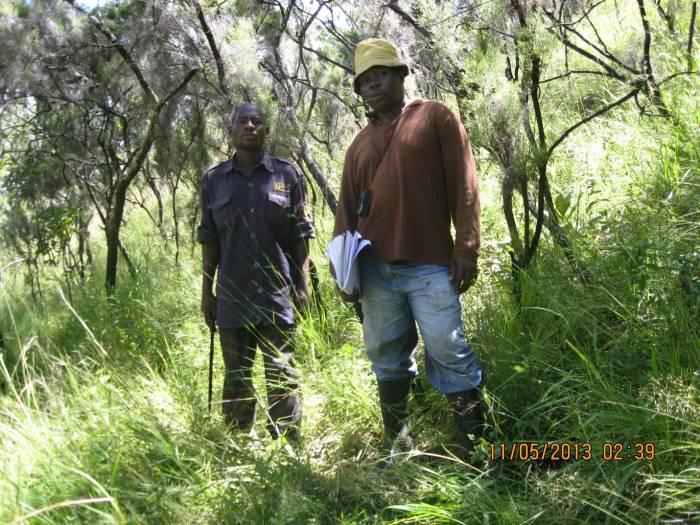Andimile Martin
The aims of my research are to investigate the distribution and abundance of mammals, carry out vegetation monitoring, and determine the extent of current illegal extraction of both mammals and timber in Lwafi Game Reserve Western Tanzania.

Illegal lumbering hut in the Lwafi Game Reserve.
Lwafi game reserve is an important part of the conservation network in western Tanzania that falls in the Katavi – Rukwa ecosystem in Rukwa region, Tanzania. With its 2,838 km2. , Lwafi Game Reserve faces challenges from illegal hunting and logging. Its borders are poorly defined, animal distribution and abundances are not known, but it still holds some mammals including chimpanzees (Pan Troglodytes), African wild dog (Lycaon pictus), elephant (Loxodonta africana), lion (Panthera leo), leopard (Panthera pardus pardus), buffalo (Syncerus caffer), reedbuck (Redunca arundinum), spotted hyena (Crocuta crocuta), topi (Damaliscus lunatus), warthog (Phacochoerus aethiopicus), sitatunga (Tragelaphus spekii), roan antelope (Hippotragus equinus) and waterbuck (Kobus ellipsiprymnus.
The project aims: 1: To investigate the distribution and abundance of large mammals in Lwafi and carry out comprehensive vegetation monitoring of the Game Reserve using satellite imagery. 2: To determine the extent of current illegal extraction of both mammals and timber. 3: To establish realistic and contemporary boundaries which will help revise Lwafi’s management status. 4: To foster local community awareness and attitudes towards conservation of Lwafi wildlife.
The project will:
1. Establish a database on the diversity and relative abundance of large mammal species of Lwafi corridor and plot vegetation of the area. These data will be added to a nationwide mammal database housed at the Tanzania Wildlife Research Institute (TAWIRI). This will provide a basis for future monitoring of mammal species in the area.
2. Establish meaningful boundaries for this large wildlife corridor. Through understanding the general ecological characteristics of the Reserve, the pressures on it, and its realistic on-the-ground contemporary boundaries, I will be able to inform conservation managers about the suitability of upgrading the legal protection status of this corridor.
3. Build awareness and cultivate conservation attitudes to local stakeholders. The project will make use of local expert opinion and citizen science (local people) in conducting ecological surveys and will help to raise local awareness and bring them to the conservation table. In addition, the project will work with other conservation partners including the Wildlife Conservation Society (WCS) that are operating south of Lwafi. These collaborations will hopefully involve them and others in longer term commitments to the Lwafi corridor.
4. Communicate results to a wider audience through a report to Tanzanian authorities, published articles and a report uploaded to the Rufford Foundation website.